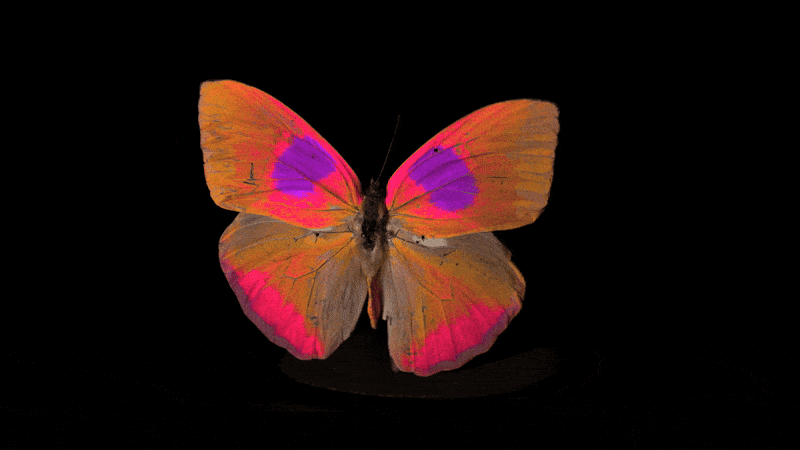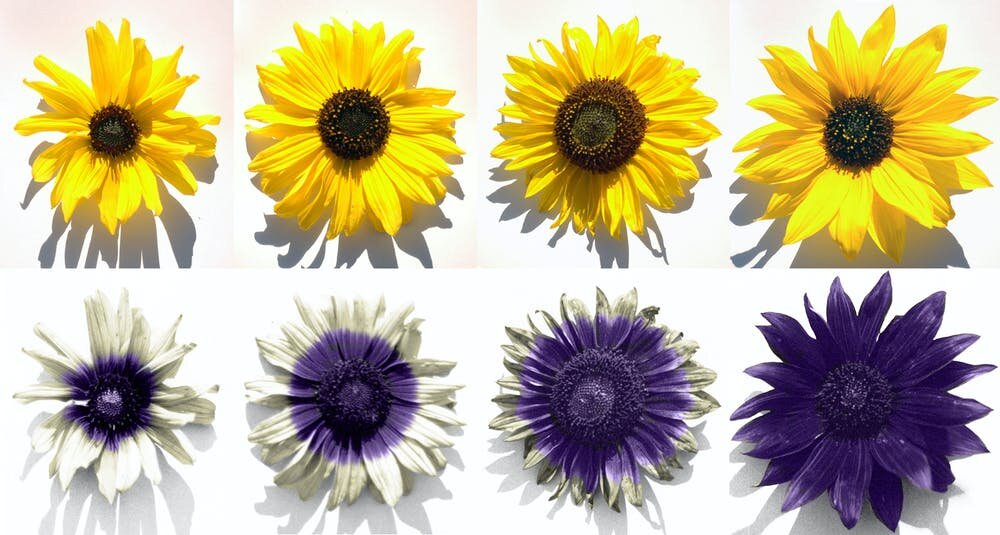Science
Related: About this forumAnimals Can See Colors We Can't--And New Tech Offers Us a Glimpse
JANUARY 23, 2024
5 MIN READ
A colorful new video technique lets scientists see the world like birds and bees
BY LAUREN LEFFER

A butterfly through the eyes of a bird. Credit: “Recording Animal-View Videos of the Natural World Using a Novel Camera System and Software Package,” by Vera Vasas et al., in PLOS Biology, Vol. 22, No. 1. Published online January 23, 2024 (CC BY 4.0)
The rainbow looks different to a human than it does to a honeybee or a zebra finch. That’s because these animals can see colors that we humans simply can’t. Now scientists have developed a new video recording and analysis technique to better understand how the world looks through the eyes of other species. The accurate and relatively inexpensive method, described in a study published on January 23 in PLOS Biology, is already offering biologists surprising discoveries about the lives of different species.
Humans have three types of cone cells in their eyes. This trio of photoreceptors typically detects red, green and blue wavelengths of light, which combine into millions of distinct colors in the spectrum from 380 to 700 nanometers in wavelength—what we call “visible light.” Some animals, though, can see light with even higher frequencies, called ultraviolet, or UV, light. Most birds have this ability, along with honeybees, reptiles and certain bony fish.
But it’s difficult to document the moving world through these animals’ eyes. To capture such a wide range of light, cameras must sacrifice visual detail. Scientists can combine high-resolution photographs from multiple cameras tuned to different wavelengths or properties of light. They can also use spectrophotometry, a method that relies on specialized lab equipment to take many different measurements of a single object. Both of these methods are time-intensive, however, and only work on still images taken in highly controlled conditions. For biologists who study animal behavior, these still photographs aren’t enough. “A lot of times, the change of color is the important or interesting part of a signal,” says lead study author Vera Vasas, a biologist now at the University of Sussex in England.
To capture animal vision on video, Vasas and her colleagues developed a portable 3-D-printed enclosure containing a beam splitter that separates light
into UV and the human-visible spectrum. The two streams are captured by two different cameras. One is a standard camera that detects visible-wavelength light, and the other is a modified camera that is sensitive to UV. On its own, the UV-sensitive camera wouldn’t be able to record detailed information on the rest of the light spectrum in a single shot. But paired together, the two cameras can simultaneously record high-quality video that encompasses a wide range of the light spectrum. Then a set of algorithms aligns the two videos and produces versions of the footage that are representative of different animals’ color views, such as those of birds or bees.
More:
https://www.scientificamerican.com/article/animals-can-see-colors-we-cant-and-new-tech-offers-us-a-glimpse/
Bernardo de La Paz
(50,909 posts)What the new technique gives is video rather than only still photos.

https://phys.org/news/2022-02-secret-ultraviolet-sunflowers-pollinators.html